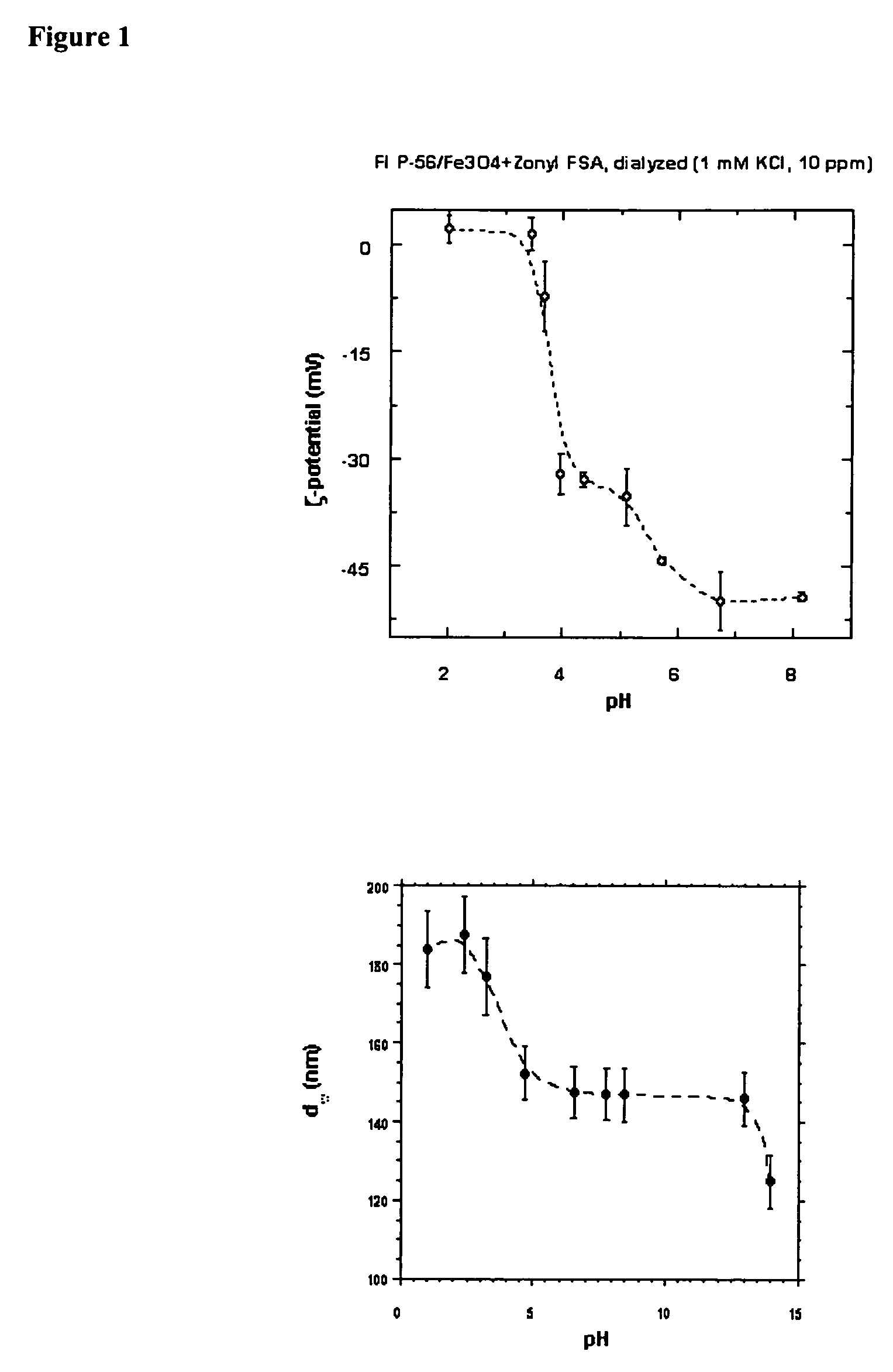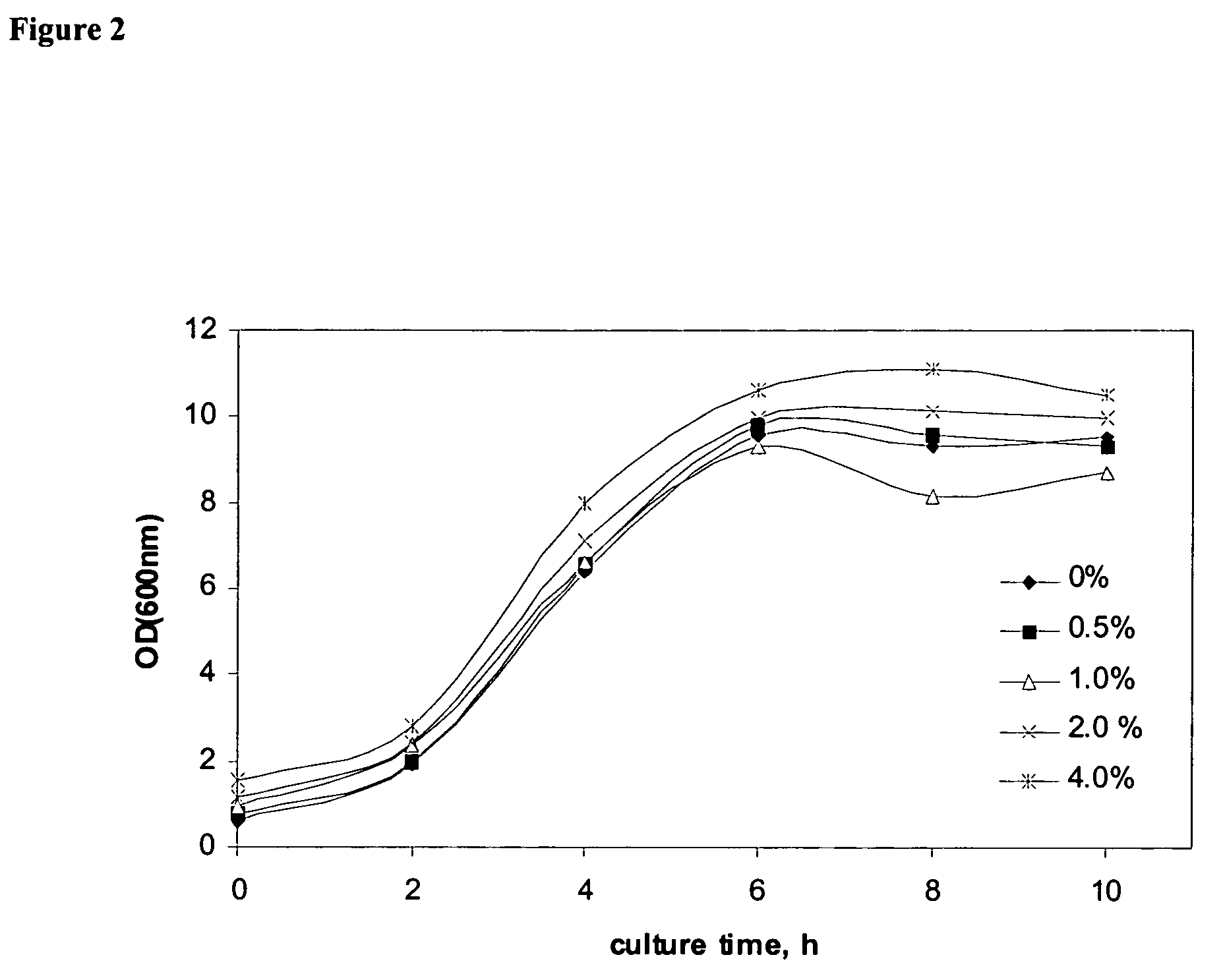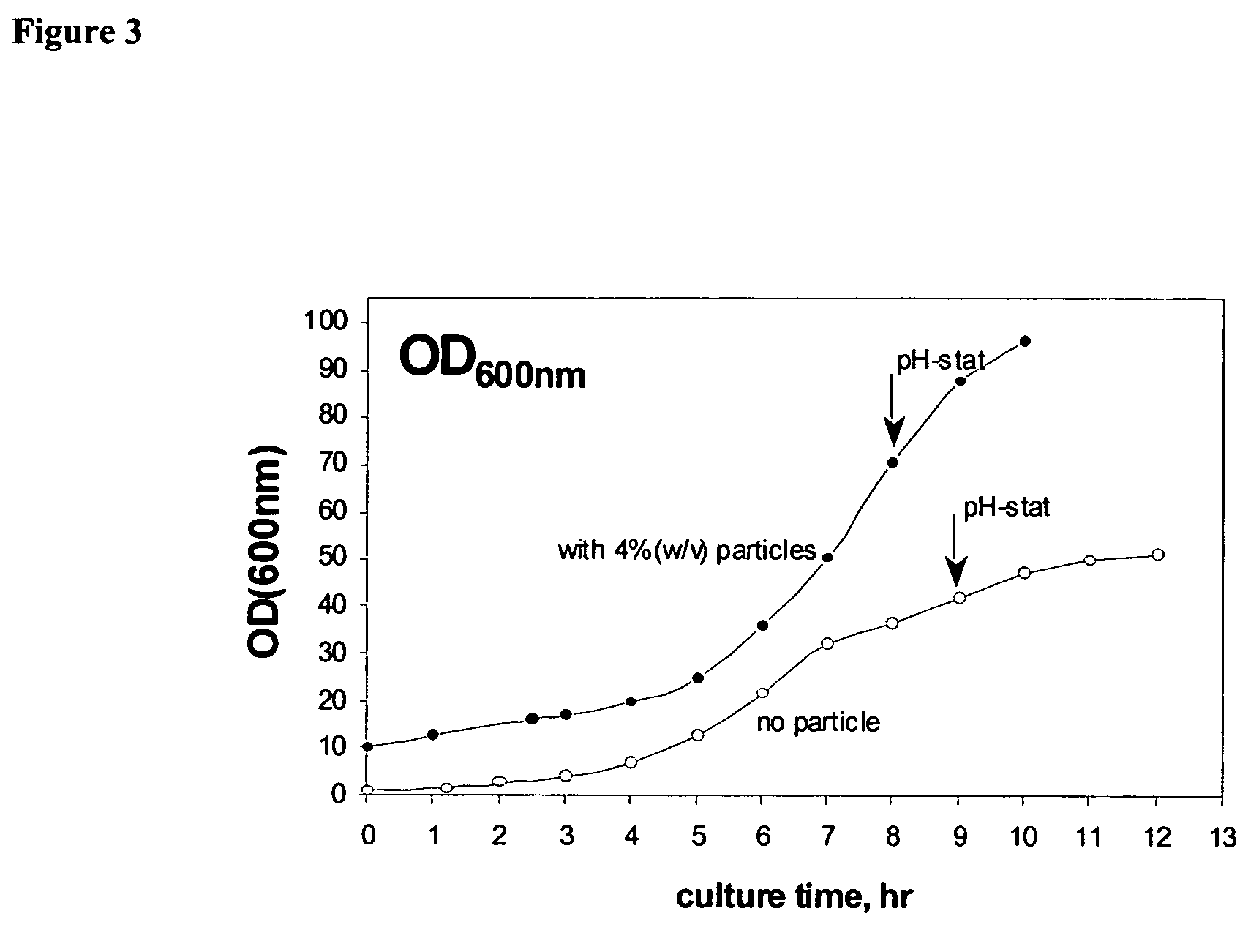Bioprocesses enhanced by magnetic nanoparticles
a technology of magnetic nanoparticles and bioprocesses, applied in the direction of magnetic materials, energy-based chemical/physical/physical-chemical processes, alkali metal oxides/hydroxides, etc., can solve the problems of difficult control of particle size and size distribution, difficult to achieve long-term milling, evaporation or sputtering methods, etc., to achieve a large amount of gas transfer, enhance cell growth in fermentation processes, and increase the effect of gas transfer
- Summary
- Abstract
- Description
- Claims
- Application Information
AI Technical Summary
Benefits of technology
Problems solved by technology
Method used
Image
Examples
example 1
Synthesis of Fe3O4 Nanoparticles Stabilized by a Fluoropolymer having Weak Acidic Charges
[0190]The following chemical reaction describes the synthesis:
[0191]
[0192]Deionized water (100 mL) was deaerated by nitrogen bubbling in a 3-necked 1000-mL flask under stirring at ambient temperature. Then 47 g of Fe (III) chloride hexahydrate (Aldrich, 97%, CAS 10025-77-1, Cat.No. 23,648-9, Lot 06029HU, MW 270.30 FeCl3.6H2O) and 17.2 g Fe (II) chloride tetrahydrate (Aldrich, 99%, CAS 13478-10-9, Cat.No. 22, 029-9, Lot #19329LI, MW198.81, FeCl2.4H2O) were added and the flask was stirred under nitrogen flow until salts dissolved and then brought to 80° C. using an oil bath. The nitrogen bubbling was discontinued. When at 80° C., 720 mL of 12.5% solution of Fluorolink™ (pH 14, dispersion:30%NH4OH=1:1 v / v) were added at once while stirring vigorously. The solution quickly turned black. The mixture was kept for 30 min at 80° C. while stirring and then allowed to cool to ambient temperature and disas...
example 2
Benign Nature of Fluoropolymer-coated Magnetic Nanoparticles
[0196]The following cell strain and media were used in a shake-flask batch experiment to test the toxicity of the nanoparticles prepared in Example 1:[0197]Strain: E. coli BL21 (DE3) with pET-15b(CLP3.1) for the expression of collagen-like polymer CLP3.1.[0198]LB medium for seed culture ( / L)
[0199]
NaCl10 gTryptone10 gYeast extract 5 g[0200]MR medium for fermentation culture ( / L)
[0201]
KH2PO413.5g(NH4)2HPO44.0gMgSO4.7H2O0.7gCitric acid0.85g10 g / L FeSO4.7H2O10.0mLTrace metal solution (TE)10.0mL20 g / L CaCl2.2H2O1.0mL
The test comprised the following sequence:[0202]Seed culture[0203]100 mL LB in 500 mL shake flask.[0204]overnight culture at 37° C., 220 rpm.[0205]Fermentation culture[0206]shake flask batch culture[0207]100 mL MR medium with 20 g / L glucose in 500 mL shake flask[0208]10% (v / v) inoculation volume[0209]amount of PCMP: 0, 0.5, 1.0, 2.0, 4.0% (w / v)[0210]37° C., 220 rpm
example 3
Enhancement of E. coli Growth by Fluoropolymer-coated Magnetic Nanoparticles in Fermentation Process
[0211]A fermentation experiment was conducted to characterize the enhancement-enabling properties of the particles of the present invention. The particles synthesized as in Example 1 were subjected to fermentation under the following experimental conditions:[0212]Seed culture[0213]100 mL LB in 500 mL shake flask[0214]overnight culture at 37° C., 220 rpm[0215]Fermentation culture (7.5 L fermentor)[0216]inoculation volume: 10% (v / v)[0217]initial fermentation volume: 3 L[0218]temperature: 37° C.[0219]agitation speed: 600 rpm[0220]pH=6.8–6.9, adjusted by 4 M (NH4OH:NaOH=2:2)
The fermentation was in two stages as follows:[0221]First Stage: batch culture till glucose decreased to zero (˜8 to 9 hours)[0222]Second Stage: pH-stat fed-batch culture by feeding (500 g / L flucose+10 g / L MgSO4.7H2O)
PUM
| Property | Measurement | Unit |
|---|---|---|
| diameter | aaaaa | aaaaa |
| diameter | aaaaa | aaaaa |
| pH | aaaaa | aaaaa |
Abstract
Description
Claims
Application Information
 Login to View More
Login to View More - R&D
- Intellectual Property
- Life Sciences
- Materials
- Tech Scout
- Unparalleled Data Quality
- Higher Quality Content
- 60% Fewer Hallucinations
Browse by: Latest US Patents, China's latest patents, Technical Efficacy Thesaurus, Application Domain, Technology Topic, Popular Technical Reports.
© 2025 PatSnap. All rights reserved.Legal|Privacy policy|Modern Slavery Act Transparency Statement|Sitemap|About US| Contact US: help@patsnap.com



